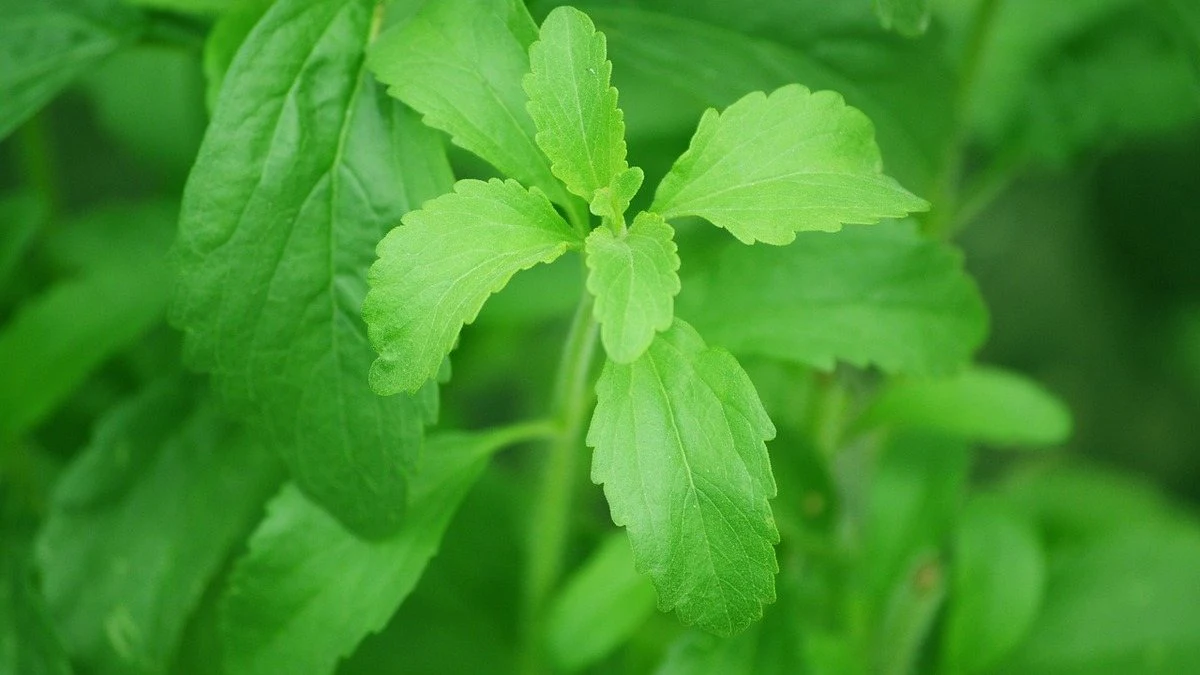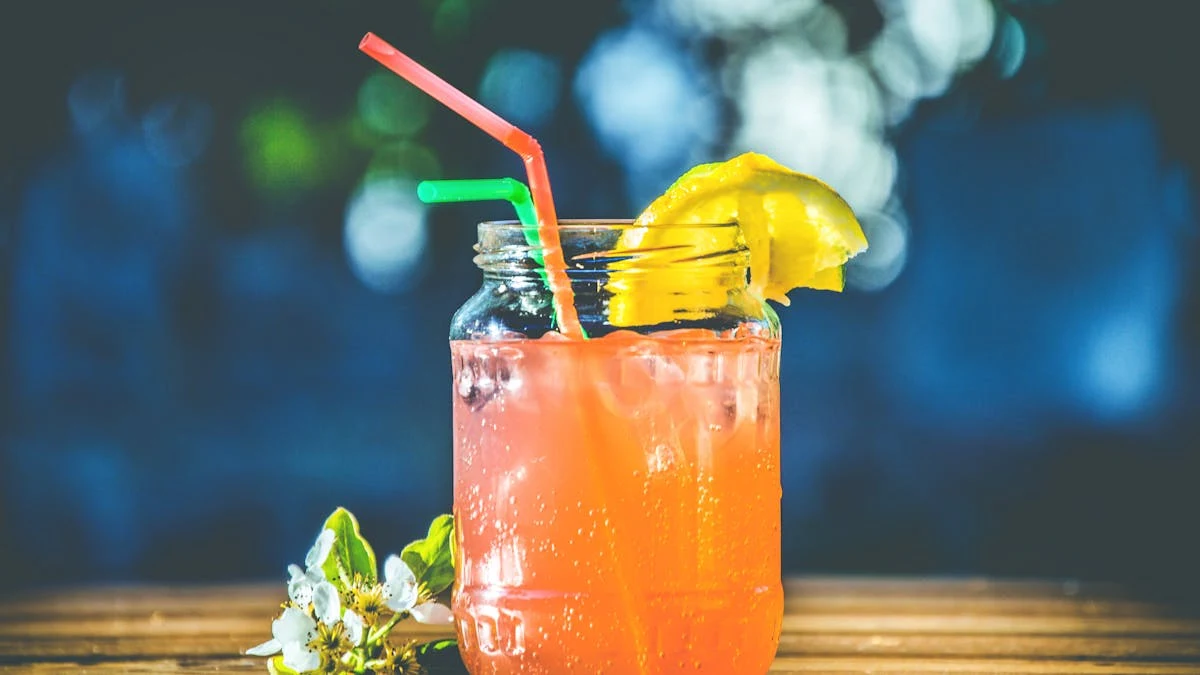Derived from the leaves of the Stevia rebaudiana plant, stevia has become a go-to choice for those seeking a sugar substitute that doesn't compromise on taste. Beyond being a mere sweetener for your coffee, stevia offers a versatile range of applications that can transform your culinary experience.
In this article, we'll delve into the wonders of stevia, exploring not only its common use as a sweetener but also uncovering the myriad ways it can enhance your cooking, baking, and even your favorite beverages.
Key Takeaways:
- Stevia can be used in baking, savory dishes, and a variety of beverages.
- It is a low-calorie alternative to sugar.
- Can help with blood sugar management.
- It contains antioxidants like flavonoids and polyphenols.
Table of Contents
- Beyond Sweetening Coffee
- Health Benefits of Stevia
- Growing and Harvesting Stevia
- Recipe Ideas and Cooking Tips
- Addressing Common Concerns
- Stevia Products in the Market
- Conclusion
Beyond Sweetening Coffee
When it comes to stevia, its uses extend far beyond its role as a simple coffee sweetener. Let's explore the exciting realms of culinary creativity that stevia unlocks.
Culinary Applications
Baking with Stevia
As a zero-calorie sweetener, it allows you to indulge in your favorite desserts without the guilt of added sugars. When using stevia in baking, it's crucial to understand the conversion ratios as it is significantly sweeter than traditional sugar.
Experiment with stevia in your cookie, cake, and muffin recipes for a delightful and healthier twist to your favorite treats.
Cooking Savory Dishes
While stevia is commonly associated with sweetness, its adaptability extends to savory dishes as well. Incorporate stevia into your savory recipes to balance flavors and reduce the need for added sugars in sauces, dressings, and marinades.
The natural sweetness of stevia can enhance the overall taste profile of savory meals without overwhelming the dish.
Beverages
Stevia-Infused Drinks
Whether it's a refreshing glass of iced tea, lemonade, or even infused water, stevia adds sweetness without the calories. Experiment with different flavors by combining stevia with fruits, herbs, or even a hint of citrus to create your signature thirst-quenching beverages.
Cocktails and Mocktails
From mojitos to margaritas, stevia can replace traditional sugar syrups, reducing the calorie content without compromising on sweetness. Create guilt-free versions of your favorite cocktails or experiment with alcohol-free mocktails for a refreshing and satisfying experience.
The versatility of stevia in both sweet and savory applications opens up a world of possibilities in the kitchen.
🍪 Balance is Key: Achieve the perfect sweetness by experimenting with stevia in small batches, finding the right balance without compromising taste in your favorite recipes.
Health Benefits of Stevia
Beyond its sweetness – this natural sweetener comes with a host of health benefits that make it a standout choice for the health-conscious consumer.
Low-Calorie Alternative
With zero calories, stevia allows you to indulge in sweetness without the worry of excess calories contributing to weight gain. This makes it an ideal choice for those aiming to reduce calorie intake or manage their weight without sacrificing the pleasure of sweetness in their diet.
Potential for Blood Sugar Management
Unlike refined sugars, stevia does not cause spikes in blood glucose levels, making it a viable option for individuals with diabetes or those looking to manage their blood sugar levels.
Studies suggest that incorporating stevia into the diet may help regulate insulin and glucose levels, providing a sweet solution for those mindful of their sugar intake. (1)
Antioxidant Properties
Antioxidants neutralize free radicals in the body, which are associated with aging and various diseases. The presence of natural antioxidant compounds like flavonoids and polyphenols in stevia promotes overall health. (2)
🌿 Fresh is Best: Consider growing your own stevia for a sustainable and fresh supply, enhancing the flavor of your dishes straight from the home garden.
Growing and Harvesting Stevia
The Stevia rebaudiana plant, native to South America, is a perennial herb that belongs to the sunflower family. The plant typically reaches a height of 1-3 feet and features small, serrated leaves that contain the sweet compounds responsible for its delightful taste.
Tips for Growing Stevia at Home
- Climate and Soil: Stevia thrives in warm climates with well-draining soil. Ensure your plant receives ample sunlight, as it plays a crucial role in the production of the sweet compounds. When cultivating indoors, choose a sunny window or use grow lights to mimic sunlight.
- Planting: Start by planting stevia seeds or cuttings in well-prepared soil. Space the plants adequately to allow for proper growth. Stevia is relatively low-maintenance but requires regular watering to keep the soil consistently moist.
- Pruning: Regular pruning helps promote bushier growth and enhances leaf production. Pinch off the tips of the stems to encourage branching and a fuller plant.
- Harvesting Time: The best time to harvest stevia is right before it flowers. This is when the leaves contain the highest concentration of sweet compounds. Use clean, sharp scissors or pruning shears to cut the stems just above a pair of leaves.
Harvesting and Processing Stevia Leaves
- Leaf Selection: Choose healthy leaves for harvesting. The youngest leaves tend to be the sweetest.
- Drying: Air-dry the harvested leaves by hanging them in a warm, dry place. You can also use a dehydrator or an oven set to low temperatures. Ensure the leaves are completely dry before storage.
- Processing: Once dry, crush the leaves into a fine powder using a mortar and pestle or a grinder. This stevia powder can be stored in airtight containers for future use in your recipes.
By cultivating stevia at home, you can have a fresh and sustainable source of this natural sweetener.
🌞 Sun-Kissed Sweetness: Place your stevia plant in a sunny spot to maximize natural sweetness, as sunlight plays a crucial role in the production of sweet compounds.
Recipe Ideas and Cooking Tips
Now that we've uncovered the secrets of growing, harvesting, and processing stevia, let's talk about how to incorporate this natural sweetener into your culinary creations.
Stevia Conversion Tips in Recipes
- Sweetness Levels: Stevia is significantly sweeter than sugar, so pay attention to conversion ratios. As a general guide, 1 teaspoon of stevia extract is approximately as sweet as 1 cup of sugar. Adjust the quantity based on your taste preferences.
- Experiment in Small Batches: When using stevia in recipes, especially in baking, start by incorporating it into small batches. This allows you to gauge the sweetness level and make adjustments before committing to larger quantities.
Recipe Ideas Using Stevia
Stevia-Sweetened Desserts
- Stevia Chocolate Chip Cookies: Replace sugar with stevia in your favorite chocolate chip cookie recipe for a guilt-free indulgence. The natural sweetness of stevia enhances the rich chocolate flavor while keeping the calorie count in check.
- Stevia Berry Parfait: Layer fresh berries with a creamy yogurt mixture sweetened with stevia for a refreshing and low-calorie dessert option. It's a perfect treat for those looking to satisfy their sweet cravings without excess sugars.
Savory Dishes with Stevia
- Stevia-Glazed Salmon: Create a savory and slightly sweet glaze for salmon by combining stevia with soy sauce, garlic, and ginger. Grill or bake the salmon for a flavorful and healthy dish that balances sweetness and umami.
- Stevia-Spiced Nuts: Elevate your snack game by coating mixed nuts with a blend of stevia, cinnamon, and a pinch of cayenne pepper. Bake until golden brown for a sweet and spicy treat that's perfect for any occasion.
🍹 Mixology Magic: Elevate your mixology skills by crafting stevia-sweetened cocktails and mocktails, adding a healthy twist to your favorite beverages.
Addressing Common Concerns
Stevia, when used in moderation, is generally considered safe for consumption. The U.S. Food and Drug Administration (FDA) has approved certain stevia glycosides, such as stevioside and rebaudioside A, as safe for use in foods and beverages. It's essential to choose reputable stevia products and adhere to recommended serving sizes.
When cultivating stevia at home, ensure that you use organic growing practices and avoid the use of pesticides or harmful chemicals. This not only enhances the safety of your home-grown stevia but also contributes to a healthier overall experience.
Potential Side Effects and Considerations
- Aftertaste: Some individuals may experience a slight aftertaste when using stevia, especially in higher concentrations. Experiment with different brands and forms (liquid, powder, or leaf) to find the one that suits your taste preferences.
- Gastrointestinal Issues: In rare cases, excessive consumption of stevia may lead to gastrointestinal issues such as bloating or diarrhea. Moderation is key, and it's advisable to start with smaller amounts, gradually increasing as your body adjusts.
- Interaction with Medications: If you are taking medications, particularly medications for diabetes or blood pressure, consult with your healthcare provider before incorporating stevia into your diet. Stevia may interact with certain medications, affecting blood sugar or blood pressure levels.
It's important to note that individual responses to stevia can vary. If you have any concerns or pre-existing health conditions, seeking guidance from a healthcare professional is recommended.
🌍 Go Green and Clean: Opt for organic growing practices when cultivating stevia at home, ensuring a clean and eco-friendly source of this natural sweetener.
Stevia Products in the Market
As the demand for natural sweeteners grows, so does the variety of stevia-based products available in the market. From powders to liquid extracts, stevia offers a range of options for those looking to sweeten their lives without the calories.
Overview of Stevia-Based Products
- Stevia Powder: Stevia powder is a popular choice for sweetening beverages, baking, and cooking. It is often available in individual packets or bulk containers. The powder is highly concentrated, requiring smaller amounts compared to sugar.
- Stevia Liquid Extracts: Liquid stevia extracts can be added to beverages, desserts, and even savory dishes. They are available in dropper bottles, allowing for precise control over sweetness levels.
- Stevia Blends: These blends combine stevia with sweeteners like erythritol or monk fruit to mimic the taste and texture of sugar while providing a reduced-calorie alternative. They are often used as a one-to-one replacement for sugar in recipes.
- Stevia-Infused Products: Beyond standalone sweeteners, stevia is now integrated into various food products. You can find stevia-sweetened snacks, beverages, and even condiments in the market.
Choosing the Right Stevia Product for Your Needs
- Sweetness Level: Consider the sweetness level you desire. Stevia powders and liquid extracts vary in concentration, so understanding the sweetness equivalency is crucial for achieving the right taste in your recipes.
- Purity and Additives: Check the ingredient list for purity. Some stevia products may contain additional ingredients or fillers. Choose products with minimal additives for a more natural sweetening experience.
- Intended Use: The form of stevia you choose may depend on your intended use. If you're primarily sweetening beverages, liquid extracts could be convenient. For baking or cooking, powders or blends may be more suitable.
- Brand Reputation: Opt for reputable brands with positive reviews. Quality varies among stevia products, and choosing a trusted brand ensures you receive a reliable and consistent product.
- Experimentation: Given the variety of stevia products available, don't be afraid to experiment. Try different forms and brands to find the one that best suits your taste preferences and culinary applications.
🛒 Read Labels Mindfully: When choosing stevia products in the market, read labels carefully to ensure minimal additives, allowing you to enjoy the pure sweetness of stevia in your recipes.
Conclusion
Explore different ways of incorporating this remarkable natural sweetener into your daily life. From stevia-sweetened desserts to savory dishes, let your creativity unfold.
Stevia invites you to reimagine your recipes and embrace a healthier, sweeter lifestyle. So, as you reach for that stevia packet or bottle, remember – it's not just about sweetening your coffee!
More Articles for You:



Comments
Post a Comment